- Home
- Scott Turow
Ultimate Punishment Page 2
Ultimate Punishment Read online
Page 2
When people asked, I referred to myself as a death penalty agnostic. Every time I thought I was prepared to stake out a position, something would drive me back in the other direction. In 1994, while I was representing Hernandez and had seen how wrong capital cases could go, John Wayne Gacy was scheduled for execution. In the late 1970s, Gacy, a contractor and part-time children’s-party clown, had raped and murdered approximately thirty-three young men, many of them teenagers, whom he had enticed to his home. According to the accounts of the few survivors, Gacy spent hours practicing tortures straight from Sade on his victims, repeatedly bringing them to the point of death until they finally succumbed, after which Gacy buried their corpses in the crawl space beneath his house. When the death penalty activists, who took me as an ally because of my work on Alex’s case, asked me to join their protests of Gacy’s execution, I refused. I could not call putting John Wayne Gacy to death an injustice.
By taking a place on the Commission, I knew I would finally have to decide what I would do about capital punishment if I were, in the favorite law school phrase, “czar of the universe.” Paul Simon, the former U.S. Senator who was one of our co-chairs and a longtime foe of the death penalty, served notice at the threshold that before our labors were completed, he intended to call the question of whether Illinois should have capital punishment. As a lawyer, I was accustomed to working on matters one case at a time. Now I would have to pass judgment on an entire system, cast a vote, and give the people of Illinois my best advice, for whatever it was worth. No more dodging my conscience, no more mouthing liberal pieties while secretly hoping some conservative showed up to talk hard-nosed realities. The omen of that day of decision would, for me, loom over the whole enterprise. I was going to have to decide.
3
GOVERNOR GEORGE RYAN
THE MAN who declared Illinois’ moratorium on executions and who appointed me to his Commission on Capital Punishment remains one of the more enigmatic figures in recent local history. On looks, George Ryan, snow-capped and agreeably round, might be mistaken for an applicant for a seasonal opening as a department store Santa, but his tenure as Illinois’ Governor from January 1999 to January 2003 was not always jolly. Throughout his years in the Executive Mansion, Ryan was engulfed by a scandal focused on the office he held before being elected Governor, when he was Illinois’ Secretary of State. By the time Ryan left office, at least fifty persons, many Ryan’s former Secretary of State employees, had been convicted in federal court, a number in connection with selling drivers’ licenses for bribes. Worse, both Ryan’s ex-chief of staff and Ryan’s political campaign fund had been indicted (and were later convicted in March 2003) for racketeering in connection with an alleged scheme to defraud taxpayers by using the workers and facilities of the Secretary of State’s office for Ryan’s gubernatorial campaign. Rumors of the Governor’s imminent indictment were rife during much of his time in office.
Despite this, Ryan neither circled the wagons nor ducked tough issues that risked further eroding his political support. A moderate-to-conservative Republican, Ryan had nonetheless run to the left of his pro-gun, anti-abortion Democratic opponent during the election. Whatever the hopes of conservative Republicans, in office Ryan hewed to the moderate agenda he promised, which was very much in line with the middle-of-the-road approach that had kept Republican governors in power in Illinois for decades. He aided business interests, but instead of a tax cut, he used the budget surplus he found when he entered office in 1999 to reverse the prevailing trend of starving schools and roads. He visited Cuba in hopes of selling Illinois agricultural products, vetoed a bill to cut off Medicaid funding of abortions, and supported anti-gun legislation.
Professionally, Ryan was a pharmacist who’d run a chain of family-owned drugstores in Kankakee, a small Illinois city just far enough from Chicago to be outside the bright lights. He started in politics in the 1960s on the county board, eventually becoming Illinois’ Speaker of the House from 1981 to 1983. He served two four-year terms as Lieutenant Governor, then spent eight years as Secretary of State, before finally being elected Governor in 1998, culminating what surely must have been a lifelong dream. He is the image of the plain-spoken, unworldly Midwesterner, pragmatic and determinedly unimpressed with himself. At a dinner in the home of a mutual friend, I watched Governor Ryan get up from the table to clear his own plate; guests who spent the night at the Executive Mansion reported that before going to bed, the Governor walked around turning off the lights.
When he spoke privately about some of his tougher decisions as Governor, including the death penalty issue, Ryan often referred to his experience as a pharmacist. I think he saw his role in government as not all that different—he was trying to help people overcome what ailed them. The sheer harshness of the death penalty always seemed to me inconsistent with the core of George Ryan’s character.
That said, Illinois politics is a rough-and-tumble world and one with a long tradition of public officials who somehow find their hands—or those of their friends—in the cookie jar. The corruption allegations that swirled throughout Ryan’s term are not atypical in my home state. Speculation about the Governor’s motives in championing a cause as unpopular as death penalty reform was a favorite parlor game. Was he trying to deflect attention from the grand jury probe? Was he hoping to create another legacy besides scandal?
I had never met George Ryan when he was elected, although, like many other nominal Democrats, I had supported him as the better choice on the issues when he ran for Governor. Not long after Ryan’s election, I spent two days at a state literary event where the Governor-elect’s wife, Lura Lynn, was representing her husband, who as Secretary of State was also Illinois’ official Librarian. Mrs. Ryan is a charmer—good-humored, straightforward, and bright. She spoke candidly about political life, and one of the things she told me was that her husband, who would be sixty-eight at the end of his term, had promised her he would not run for reelection. Mrs. Ryan was far too experienced in politics to take that at face value and said as much. But in the years that ensued, as others castigated George Ryan and looked askance at his motives, I remembered what Mrs. Ryan had said. To me, George Ryan always appeared to be somebody who knew the rehearsal was over. In the time he had, on the issues that counted, he was simply going to do what was right.
4
AMERICA AND THE DEATH PENALTY
WHATEVER George Ryan’s character or motives, there can be no dispute that Ryan’s decision to declare the moratorium was the first act in a national reassessment of the death penalty that is quite clearly under way. In May 2002, Parris Glendenning, the Governor of Maryland, followed Ryan’s example and suspended executions in his state for a year, pending a study of racial disparities in who gets sentenced to death. (The report by Raymond Paternoster of the University of Maryland was released on January 7, 2003, and concluded that both race and geography affect death penalty decisions in Maryland, but the new Governor, Robert Ehrlich, has vowed to lift the moratorium, a position that probably gained appeal in the wake of the Beltway Sniper killings.) The state of Indiana established a Criminal Law Study Commission in 2001 to look at various issues related to the death penalty. In March of 2003, a committee appointed by the Pennsylvania Supreme Court recommended halting all executions in the state until the reasons for apparent racial bias in the application of the death penalty in the state are better understood.
The American judiciary also seems to be exhibiting a new willingness to restrict the death penalty, led by the U.S. Supreme Court. In June 2002, the Court ruled that a defendant who has elected a jury trial has a constitutional right to have that jury, rather than a judge, decide if he will be sentenced to death. The ruling brought into question death sentences imposed in nine different states. Furthermore, based on that holding, in September a federal judge in Vermont said the federal capital punishment statute is unconstitutional because it lacks adequate safeguards on the evidence presented to juries to obtain a death verdict.
&n
bsp; Even more significantly, perhaps, the Supreme Court also ruled in 2002 that execution of the mentally retarded is unconstitutional as cruel and unusual punishment. The decision invites extended litigation about how capable a human being must be before execution is constitutionally acceptable. At the start of the Supreme Court’s next term, in October 2002, four justices expressed the view that executing murderers who were under eighteen at the time of their crime is also cruel and unusual punishment. Their consensus essentially guarantees that the entire Court will eventually decide this question (which may well determine the fate of Lee Malvo, who is facing a capital trial in Virginia for the Beltway Sniper shootings he allegedly committed at age seventeen).
The Supreme Court’s new latitude toward death penalty issues continued in its next term. In 2003, the Court nudged the door wider for post-conviction review in federal court for capital cases and raised the bar for a defense lawyer’s duty to seek out mitigating evidence for a capital sentencing hearing.
This, of course, is not the first time that America and its courts have thought twice about the wisdom of killing killers. One need only glance at a TV screen to realize that murder remains a national preoccupation, and the concomitant questions of how to deal with it have long challenged contending strains in American moral thought, pitting Old Testament against New, retribution against forgiveness.
To some extent, the debate about capital punishment has been going on almost since the founding of the Republic. At that time, each state, following the English tradition, imposed death for a long list of felonies. But the same humanism that posited the equal value of all men and animated democracy necessarily led to many questions about a punishment that vested such fierce power over citizens in the state and assumed individuals were irredeemable. Jefferson was among the earliest advocates of restricting executions, and in 1794, Pennsylvania limited capital punishment to first-degree murder. In 1846, Michigan became the first American state to outlaw capital punishment for killers.
Public support for capital punishment has waxed and waned in the United States throughout our history. In 1966, opinion polls showed for the first time that a majority of Americans opposed capital punishment. Inspired, perhaps, by the seeming evolution in prevailing standards, the U.S. Supreme Court in 1972 held in Furman v. Georgia that in the three cases before the Court, the death penalty constituted cruel and unusual punishment, with the justices in the majority noting the utter caprice with which American juries were allowed to decide whether a defendant lived or died. But the turmoil of the sixties had led to a new American passion for law and order, and the Furman decision inspired a powerful political backlash. Several states passed new death penalty laws, and in 1976 the Court decided that Georgia’s revised and more exacting capital statute, designed to more closely confine a jury’s discretion in imposing death, was constitutional after all. Two justices, Byron R. White and Potter Stewart, who had found the death penalty cruel and unusual in Furman, approved the Georgia statute, as did Justice John Paul Stevens, who had replaced William O. Douglas in the interval. Illinois, along with many other states, quickly followed suit with a new capital law patterned after Georgia’s.
But in the 1990s, the advent of DNA testing repeatedly showed that innocent people had been convicted of violent crimes. Many of the exonerated were on death row. As of May 2003, the Death Penalty Information Center counted 108 persons who have been sentenced to death in the United States and later legally absolved. And there are dozens of additional cases that fall short of outright exoneration where emerging questions have led the condemned to be freed. The prospect of error seems to be the leading cause in reduced support for the death penalty. In the most recent polling, early in 2003, a plurality of only 49 percent of Americans favored capital punishment, when offered the alternative of life in prison without parole.
For most Americans, the death penalty debate goes no further than asking whether they “believe” in capital punishment. There is good reason for this, of course, because the threshold issues define us so profoundly as individuals and as a society that it is almost impossible to move past them. What are the goals of punishment? What do we think about the perfectibility of human beings and the perdurability of evil? What value do we place on life—of the murderer and of the victim? What kind of power do we want in the hands of government, and what do we hope the state can accomplish when it wields it?
One of the reasons that the death penalty debate so preoccupies us is because of the essential nature of these questions. Almost no one feels detached about capital punishment. Advocates, opponents, and those in conflict all see in the issue a struggle for the national soul. Many death penalty opponents who root their position in religious or spiritual convictions treat those who favor death sentences as barbarians or wanton sinners. Supporters of capital punishment frequently characterize those on the other side as bleeding hearts and hypocrites, who would never feel the same way were it their loved ones who had been murdered. These volleys of mutual accusation have often drowned out the nuances in the national debate and, I suspect, masked the degree to which large numbers of Americans, like me, have long approached these questions with some residue of doubt. The truth, I suspect, is that as crimes and cases unfold around us, many of us often feel a visceral attraction to both positions.
5
THE COMMISSION
GOVERNOR RYAN’S COMMISSION on Capital Punishment was clearly assembled to represent diverse viewpoints and experience. Among the fourteen of us, there were prominent Democrats and Republicans, three women, and four members of minority groups. Twelve were attorneys, including a former Chief Judge of the federal district court, two sitting State’s Attorneys, two public defenders, and a number of lawyers who’d walked on both sides. Over the years, eleven of us had been prosecutors, while nine of us had experience as defense lawyers. And Paul Simon, a journalist by training, had helped write the laws as a United States Senator.
The criminal bar, even in a large city, resembles a small town, and I had shared stretches in my lawyering life, often very large and significant ones, with many of my colleagues. One of the Commission co-chairs, Tom Sullivan, long a partner at a prominent Chicago firm, had been the United States Attorney who hired me fresh out of Harvard Law School and who, in time, became my principal mentor as an attorney. Andrea Zopp, now General Counsel of Sears, had been, by turns, a young lawyer I’d helped train in the U.S. Attorney’s Office, then, years later, the First Assistant State’s Attorney for Cook County, which encompasses Chicago, and after that, my law partner. Our chair, Frank McGarr, was a former federal judge, before whom I had tried a number of cases. The Executive Director, Matt Bettenhausen, had the same pedigree as a lawyer that I did—Sonnenschein and the U.S. Attorney’s Office, albeit in reverse order—and thus we’d been crossing paths for more than a decade. I knew Mike Waller, the State’s Attorney in Lake County, the third most populous county in Illinois, because I dealt with him for years in the course of representing Christopher Thomas, a young man whom Mike’s office had sent to death row. My pro bono work had put me in frequent contact with Rita Fry, the Public Defender of Cook County, and with Ted Gottfried, the State Appellate Defender for Illinois. And I couldn’t count the number of cases I’d had with Bill Martin, literally a lawyers’ lawyer, an ethics expert who, after his time as a prosecutor, often represented attorneys facing professional discipline. I’d also interacted often with Don Hubert when he’d been president of the Chicago Bar Association.
Naturally, I didn’t know everybody the Governor appointed. Kathy Dobrinic was from downstate Montgomery County, now finishing her third term as State’s Attorney there. She was president-elect of the state association of county prosecutors. Tom Needham, another former Assistant State’s Attorney in Cook County, was the chief of staff to the superintendent of the Chicago Police Department. Perhaps the Governor’s most intriguing appointment was Roberto Ramirez; he and former Senator Simon were the lone Commission members without law degrees. A
Mexican American immigrant who’d built a successful janitorial business, Roberto knew more than he wanted about violent death. His father had been murdered, and his grandfather had shot and killed the man who was responsible.
With the exception of Roberto, we were all bound up in the same network of long-term relationships that gave us a solid footing to start. But very often these kinds of bodies accomplish little. Members are polite to one another, very pleased with themselves for sharing such esteemed company, and much too busy doing the stuff that made them eligible for membership in the first place to make much of an effort. Our group was different. The assignment was different. And all of us, Republicans and Democrats, were probably inspired because George Ryan had taken such large risks in declaring the moratorium. We all accepted the Governor’s premise that Illinois’ capital punishment system required scrutiny. And we all came with an appreciation for the profound complexities of capital punishment as a legal, political, and moral issue. We arrived with our experiences and our opinions, but from the start, there was virtually no posing. Nobody ever pretended that he or she couldn’t understand the contrary point of view or, in fact, had not been reached by many of its claims.
The essential question the Governor posed to the Commission was this: What reforms, if any, would make application of the death penalty in Illinois fair, just, and accurate? Everyone on the Commission agreed that the inquiry by its nature required that we first consider reforms before we could ask whether the resulting system met the various tests of fairness. Our foremost task was pragmatic: identify problems and propose solutions. The big issues would come at the end.
One of the initial assignments the Governor had given us was to study in depth the cases of those who had been sentenced to death in Illinois and later exonerated. Looking at these cases together—there were thirteen at that time—we had to determine if there were endemic problems that could be isolated and remedied.

 Testimony
Testimony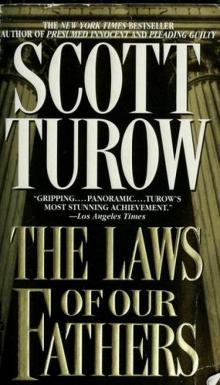 The Laws of Our Fathers
The Laws of Our Fathers Ordinary Heroes
Ordinary Heroes Personal Injuries
Personal Injuries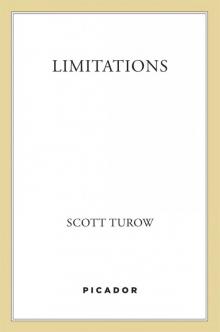 Limitations
Limitations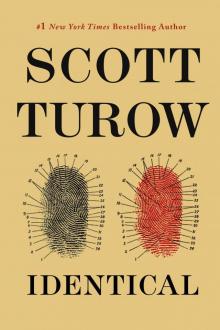 Identical
Identical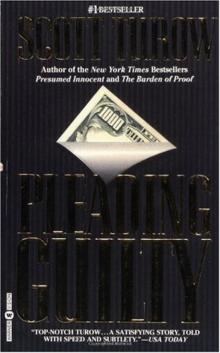 Pleading Guilty
Pleading Guilty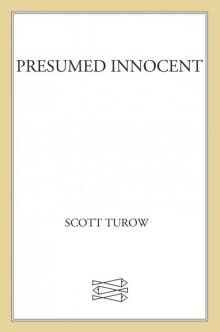 Presumed Innocent
Presumed Innocent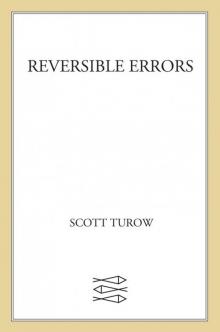 Reversible Errors
Reversible Errors One L: The Turbulent True Story of a First Year at Harvard Law School
One L: The Turbulent True Story of a First Year at Harvard Law School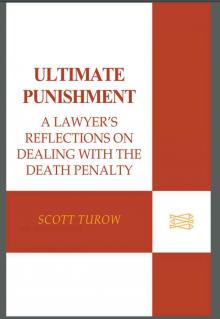 Ultimate Punishment
Ultimate Punishment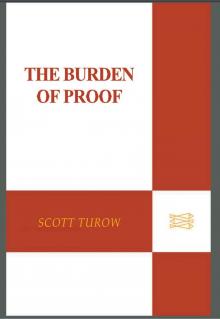 The Burden of Proof
The Burden of Proof Ordinary Heroes (2005)
Ordinary Heroes (2005)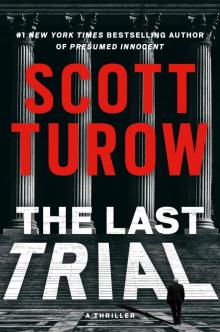 The Last Trial
The Last Trial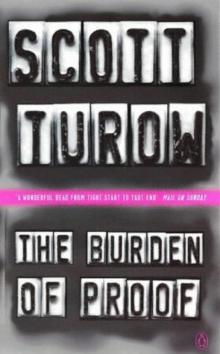 The Burden of Proof kc-2
The Burden of Proof kc-2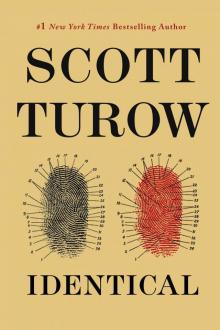 KC09 - Identical
KC09 - Identical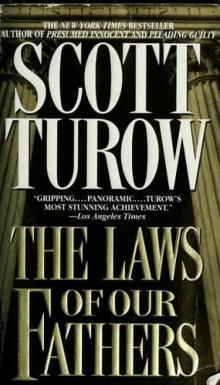 The Laws of our Fathers kc-4
The Laws of our Fathers kc-4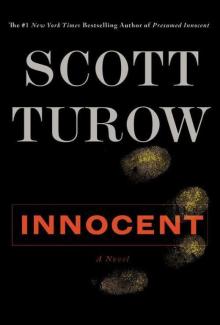 Innocent kc-8
Innocent kc-8 One L
One L Identical kc-9
Identical kc-9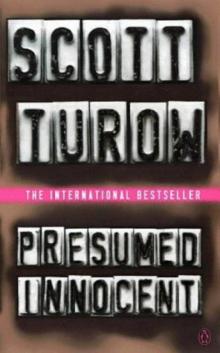 Presumed innocent kc-1
Presumed innocent kc-1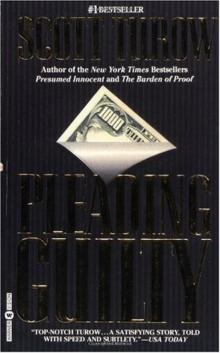 Pleading Guilty kc-3
Pleading Guilty kc-3 One L (1977)
One L (1977) Personal injuries kc-5
Personal injuries kc-5